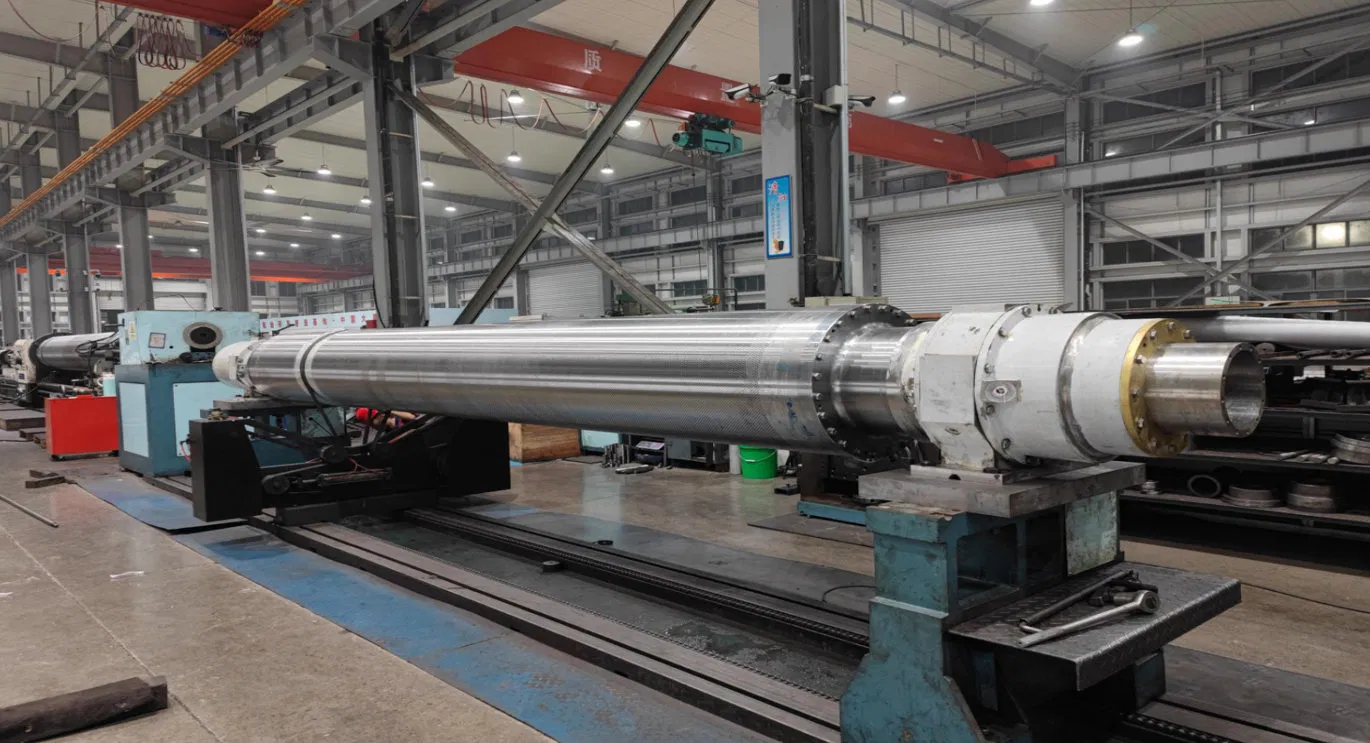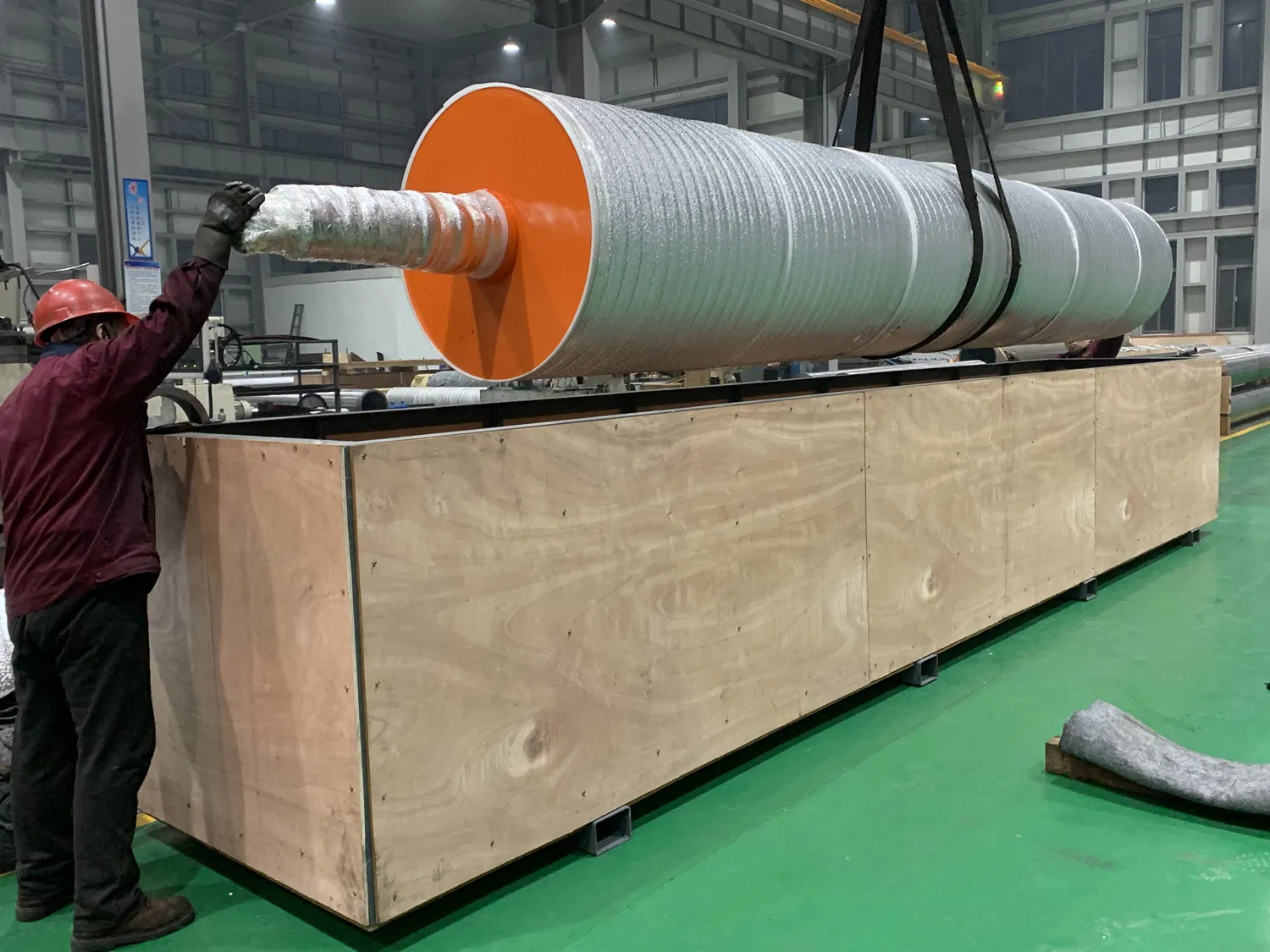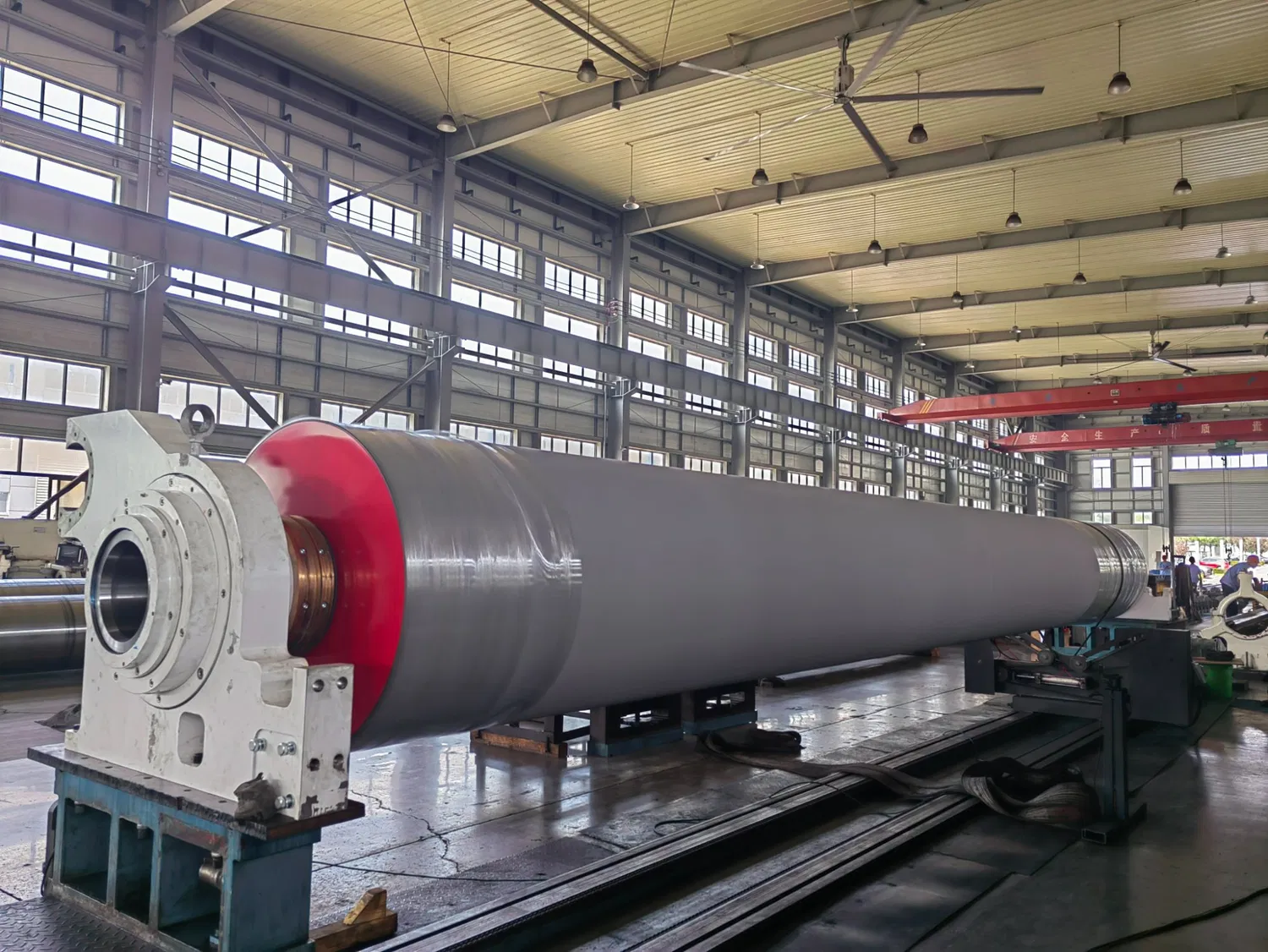In the intricate world of papermaking, the smooth, consistent operation of paper machine rolls is paramount. These critical components are the heart of the paper production process, influencing everything from sheet formation to final product quality. Yet, a persistent and costly challenge that many mills face is roll corrugation. This phenomenon, characterized by uneven wear patterns on the roll surface, can lead to significant operational disruptions, reduced paper quality, and increased maintenance costs. Frankly speaking, ignoring it is not an option.
Have you ever wondered what truly causes these ripples of destruction on your valuable rolls? It's a complex interplay of mechanical stresses, operational parameters, and material properties. Understanding these underlying factors is the first step toward effective prevention. This comprehensive guide will delve deep into the strategies and best practices on how to prevent paper machine roll corrugation, ensuring your operations run smoother, longer, and more profitably. We'll explore everything from proactive maintenance to advanced diagnostic techniques, offering actionable insights that can make a real difference in your mill.
Understanding the Root Causes of Paper Machine Roll Corrugation
To effectively combat roll corrugation, it's essential to pinpoint its origins. In my experience, corrugation isn't a singular issue but rather a symptom of various underlying problems. Many experts agree that these causes can broadly be categorized into mechanical, operational, and material factors. Identifying which of these is primarily at play in your specific setup is crucial for developing targeted prevention strategies.
Mechanical Factors: The Silent Stressors
Mechanical issues are often the stealthy culprits behind corrugation. These are the problems that slowly, almost imperceptibly, degrade your rolls until the damage becomes undeniable. One major factor is bearing health. Worn, misaligned, or improperly lubricated bearings can introduce vibrations and uneven loading on the roll, leading to localized wear. Imagine trying to drive a car with wobbly wheels; the effect on the tires would be similar to what faulty bearings do to your rolls.
Another significant mechanical contributor is roll imbalance. Even slight imbalances, whether static or dynamic, can generate considerable centrifugal forces at high operating speeds. These forces cause the roll to "hop" or vibrate, creating repetitive impact points on the roll surface that eventually manifest as corrugations. Similarly, misalignment of rolls within the machine can create uneven nip pressures and side-to-side stresses, accelerating wear in specific areas. It's worth noting that even a tiny degree of misalignment can have magnified effects over time, especially in high-speed operations.
Operational Factors: The Day-to-Day Influences
Beyond the mechanical integrity of the rolls themselves, the way the paper machine is operated plays a massive role in preventing or promoting corrugation. Speed variations, particularly rapid accelerations or decelerations, can induce torsional stresses and vibrations that contribute to uneven wear. Think about how a car's tires wear out faster with aggressive driving. The same principle applies here.
Nip pressure management is another critical operational parameter. Excessive or inconsistent nip pressures can lead to localized deformation and stress concentrations on the roll surface. If the pressure is not uniform across the roll width, certain areas will experience more intense contact and wear, initiating corrugation. Furthermore, moisture content variations in the paper web can affect the friction and heat transfer at the nip, indirectly contributing to roll surface degradation. Maintaining consistent process parameters is vital for minimizing stress on the rolls.
Material Factors: The Roll's Own Composition
Interestingly enough, the very materials from which the rolls are made, and their surface coatings, can also influence their susceptibility to corrugation. The properties of the roll cover material – its hardness, elasticity, thermal conductivity, and abrasion resistance – directly impact how it interacts with the paper web and other rolls. A cover that is too soft might deform easily, while one that is too hard might not absorb vibrations effectively, leading to different types of wear patterns. The base roll material also matters; its structural integrity and ability to dissipate heat are fundamental to preventing long-term deformation.
Proactive Maintenance Strategies for Roll Longevity
When it comes to how to prevent paper machine roll corrugation, proactive maintenance isn't just a good idea; it's absolutely essential. Waiting for problems to appear is a recipe for costly downtime and extensive repairs. Instead, implementing a robust preventative maintenance program can significantly extend roll life and maintain peak operational efficiency.
Regular Inspection and Monitoring: Your Eyes and Ears
One of the most effective proactive measures is consistent inspection and monitoring. This goes beyond just visual checks. Implementing advanced diagnostic tools like vibration analysis can detect imbalances, bearing issues, and misalignment long before they become visible problems. By tracking vibration signatures over time, you can predict potential failures and schedule maintenance during planned shutdowns, avoiding emergency repairs. Similarly, thermal imaging can identify hot spots on rolls or bearings, indicating friction or overheating issues that could lead to material degradation or mechanical failure.
Regular visual inspections, though seemingly basic, are still crucial. Look for early signs of wear, surface irregularities, or changes in roll appearance. Documenting these observations and trending them over time provides valuable data for predictive maintenance. I've found that a disciplined approach to data collection is invaluable.

Precision Grinding and Crowning: The Art of Surface Restoration
Even with the best preventative measures, rolls will eventually show signs of wear. Precision grinding is a critical maintenance activity that restores the roll's original profile and surface finish. This isn't just about making the roll smooth again; it's about maintaining the precise crowning profile. The crown, a slight curvature designed into the roll, ensures uniform nip pressure across the entire width of the paper web. If the crown is lost or becomes uneven due to wear, localized pressure points will emerge, directly leading to corrugation. Regular, precise grinding, performed by skilled technicians using calibrated equipment, is non-negotiable for extending roll life and preventing defects.
Bearing Care and Replacement: The Foundation of Smooth Operation
As mentioned, bearings are often silent contributors to roll problems. A comprehensive bearing care program is vital. This includes proper lubrication schedules, using the correct type and amount of lubricant, and regular monitoring for signs of wear or contamination. When bearings reach the end of their service life, timely replacement with high-quality components is paramount. Attempting to squeeze extra life out of worn bearings is a false economy that can lead to catastrophic roll failure and much higher repair costs down the line. Many experts agree that investing in premium bearings and meticulous installation pays dividends.
Optimizing Operational Parameters to Minimize Stress
Beyond physical maintenance, fine-tuning your paper machine's operational parameters is a powerful way to reduce stress on rolls and significantly contribute to how to prevent paper machine roll corrugation. This involves a holistic approach to how the machine runs, focusing on consistency and control.
Nip Pressure Management: The Art of Gentle Contact
The nip, where two rolls come into contact, is a high-stress zone. Precise and consistent nip pressure is fundamental to preventing corrugation. Both excessive and insufficient pressure can cause problems. Too much pressure can lead to localized overheating and accelerated wear, while too little can result in slippage and uneven contact. Implementing advanced control systems that allow for real-time monitoring and adjustment of nip pressure across the roll width can make a profound difference. Regular calibration of pressure sensors and actuators is also critical to ensure accuracy. In my experience, even minor deviations in nip pressure can quickly escalate into significant roll surface issues.
Speed Synchronization: Harmony in Motion
In a multi-roll paper machine, maintaining precise speed synchronization between different sections is crucial. If rolls in different sections are not perfectly synchronized, it can lead to tension variations in the paper web, causing slippage or drag on the roll surfaces. This slippage generates friction and heat, accelerating wear and potentially initiating corrugation. Modern drive systems with precise speed control and feedback loops are essential for achieving this synchronization. Regular checks and adjustments of drive parameters should be part of your routine operational optimization.
Temperature and Moisture Control: Environmental Stability
The operating environment, particularly temperature and moisture, can have subtle but significant effects on roll integrity. Fluctuations in temperature can cause thermal expansion and contraction of roll materials, potentially leading to stress and deformation. Maintaining stable operating temperatures, especially within the roll itself, is important. Similarly, managing moisture content in the paper web affects the coefficient of friction at the nip and the overall interaction between the web and the roll surface. Consistent moisture profiles help ensure uniform contact and reduce the likelihood of localized wear. It's worth noting that these environmental factors are often overlooked but can be key contributors to long-term roll health.
The Role of Roll Materials and Coatings in Prevention
The material science behind paper machine rolls has advanced significantly, offering new avenues for preventing corrugation. Choosing the right roll materials and applying advanced coatings can dramatically improve a roll's resistance to wear, heat, and deformation, directly impacting how to prevent paper machine roll corrugation.
Selecting the Right Roll Covers: Tailoring for Performance
Roll covers are not one-size-fits-all. Different applications within the paper machine (e.g., press rolls, dryer rolls, calender rolls) demand specific properties from their covers. Factors like hardness, elasticity, chemical resistance, and thermal conductivity must be carefully matched to the operating conditions and paper grade. For instance, a cover designed for high-pressure press sections will have different properties than one used in a low-pressure forming section. Utilizing covers with superior wear resistance and vibration dampening characteristics can significantly delay the onset of corrugation. To be honest, this is an area where investing in quality truly pays off.
Advanced Coating Technologies: The Protective Shield
Beyond the base cover material, advanced coating technologies offer an additional layer of protection. These coatings, often ceramic or composite-based, can impart exceptional hardness, abrasion resistance, and release properties to the roll surface. They reduce friction, minimize sticking, and provide a more uniform surface for paper contact, all of which help to prevent localized wear and the initiation of corrugation. Furthermore, some coatings are designed to improve heat dissipation, reducing thermal stresses on the roll. I've seen firsthand how the right coating can extend the life of a roll by many months, sometimes even years.

Advanced Diagnostics and Predictive Analytics for Early Detection
The future of preventing paper machine roll corrugation lies in leveraging technology for early detection and data-driven decision-making. The ability to predict problems before they occur is a game-changer for maintenance and operational efficiency.
Leveraging IIoT and AI for Early Detection: The Smart Mill
The Industrial Internet of Things (IIoT) and Artificial Intelligence (AI) are revolutionizing how we approach maintenance. By deploying a network of sensors on paper machine rolls and their surrounding components, mills can collect vast amounts of real-time data on vibration, temperature, pressure, and more. AI algorithms can then analyze this data, identifying subtle patterns and anomalies that indicate the nascent stages of corrugation or other roll issues. This predictive capability allows maintenance teams to intervene precisely when needed, minimizing downtime and maximizing roll lifespan. It's truly fascinating how these technologies can provide insights that were previously impossible to obtain.
Data-Driven Decision Making: From Reactive to Proactive
With predictive analytics, maintenance shifts from a reactive "fix-it-when-it-breaks" model to a proactive, data-driven approach. Instead of relying solely on scheduled maintenance or visual inspections, mills can use insights from IIoT and AI to optimize grinding schedules, predict bearing failures, and fine-tune operational parameters. This not only helps in eliminating roll defects in papermaking but also optimizes overall equipment effectiveness (OEE). The continuous feedback loop from data collection to analysis to action creates a virtuous cycle of improvement, ensuring that your paper machine rolls operate at their peak performance for longer periods.
Frankly speaking, the investment in these advanced diagnostic tools pays for itself many times over through reduced downtime, lower maintenance costs, and improved product quality. It's about moving from guesswork to precision in your maintenance strategy.

Preventing paper machine roll corrugation is a multifaceted challenge that demands a holistic approach. It's not just about fixing a problem when it arises, but about understanding its root causes, implementing rigorous proactive maintenance, optimizing operational parameters, selecting the right materials, and leveraging cutting-edge diagnostic technologies. By focusing on these key areas, mills can significantly extend the life of their rolls, reduce unexpected downtime, enhance paper quality, and ultimately improve their bottom line. The journey to flawless roll performance is continuous, but with dedication and the right strategies, it's an achievable goal for any papermaking operation.
For more detailed information, please visit our official website:paper machine roll corrugation
About the author: John "Roll Whisperer" Davis is a seasoned expert in paper machine operations and maintenance, with over 25 years of hands-on experience in leading mills worldwide. Specializing in roll integrity and defect prevention, John has a proven track record of optimizing machine performance and extending equipment lifespan. His pragmatic approach and deep understanding of mechanical, operational, and material science factors make him a trusted authority on keeping paper production lines running smoothly and efficiently.


